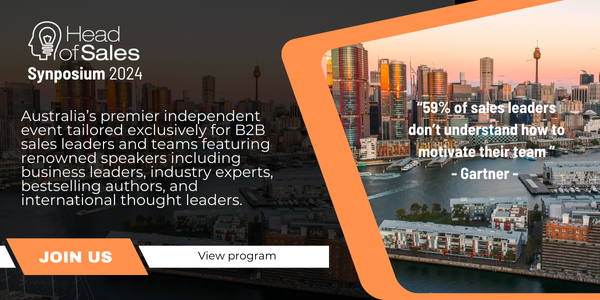What tactics for leveraging LinkedIn Sales Navigator do you need to know?
Blended prospecting techniques are nothing new but codification of these combinations in the context of the Sales Navigator platform is required.
Step 1: Take an account list of no greater than 50 accounts and add them on Sales Navigator.
Step 2: Save 5-7 prospects per account as leads in every account because you are going to monitor the content they share and where they are mentioned + interact with it.
Step 3: Build a robust Sales Navigator feed you’ll utilize in both web and mobile STREAM. It’s a custom feed.
Step 4: Here’s the kicker, sort by Lead Shares and start to comment on what they’re sharing in a thoughtful way. Remember you aren’t connected to these people so it’s wow factor for CXOs to have some total stranger commenting in a relevant way out of the clear blue! Contacts that share based on the 90, 9 and 1 internet theory of prosumption are massively valuable. Basically, only 1% write, 9% share, and the other 90% are really more voyeurs on the web (Wikipedia power law distribution). If someone is sharing, YOU MUST CALL THEM. So use a service like Lusha, Data.com, ZoomInfo, DiscoverOrg or RainKing to directly call them and comment on what they shared in Social to their LinkedIn feed as evidenced by Navigator.
Step 5: You need to set aside time to mine your common connection or “TeamLinks” per account. Your goal is to call common connections or colleagues that are connected into prospect companies. All common connections should be exploited. If you sell software to CMOs, still leverage a Teamlink to the HR department or Legal. All TeamLinks are golden. Navigator “Teamlinks,” for those just tuning in is the most powerful feature of advanced LinkedIn. In essence, it lets you see who in your own company is connected to anyone in the prospect organization.
Step 6: Set aside time to explore all your 1st and 2nd-degree referral sources into prospect bases. These are represented in the middle column on Navigator. I would click underneath the pane to expand and start to look for patterns that emerge in the common connections. Here it will reveal competitive salespeople in other vendor companies or nodes on the network. Nodes are thought leaders in your industry so omnipresent, that their mere connection to your prospects, is heat seeking to indicate they’re the right decision maker. Call up sellers in affiliated vendors that are harmonious to what you sell and co-host networking events with them to overlap your networks. The cardinal rule of referral selling on LinkedIn is NOT to do it digitally. When you identify the connection in common, call that connection point and offer to ghostwrite a message they can pass along to make the warm introduction. MAKE IT FRICTIONLESS.
B2B buyers are 5x more likely to engage when the outreach is through a mutual connection. – LinkedIn Research
Step 7: Watch the daily email digest from Navigator that hits your smartphone email inbox for job changes. When you are going after a calling list, start to call down the Navigator Newsfeed referencing the lead news mentions, job changes, lead recommendations and other triggers like funding, or innovation projects. Use the live Navigator real-time feed as the bedrock for your TRIPLES. You’ll remember the basis of COMBO selling is a call, email and vmail (video or voicemail) back to back to back, preferably under 2 minutes. Jab jab, hook!
Step 8: Don’t exceed 50 target accounts and up to 7 contacts per. This means you should only ever be monitoring 300 objects which is double the Dunbar number of 150. The neocortex can only hold 150 connections. LinkedIn Sales Navigator actually gets unwieldy and you start to miss information if you follow too many people or accounts. Even if you change your STREAM sorting to “recent” versus “most important,” it’s cumbersome. 50 Key Target Accounts per quarter max, 5-7 leads per prospect, at least 1 C-Level per account. Remember you can easily purge out accounts and leads if you track too many. Work clean, keep it organized and tight.
A hodgepodge of Tricks and Tips:
- Nobody ever calls Presidents, CEOs or Board Members. You should call VCs who back the companies if going after earlier stage ventures. Where do you get the phone number? Many times, by just linking in (try to write a customized LinkedIn request), they’re phone number will already be freely shared on profile in the Contact area.
- Exhaust all of your InMails every month no matter what, even a disinterested response gives you a credit back which yields over 30 in total. Huge secret: You can hit reply to any InMail an unlimited amount of times. So that 30 becomes 60 and 90 very fast. Quality InMail follow-up is key.
- I talk to CXOs, they get 1 InMail in every 100 emails. They get 1 phone call / VM in 500-1,000 emails. STOP, REREAD THAT! What does this tell you? It’s not even the quality of a cold call, voicemail or InMail: IT’S DOING IT AT ALL that makes the lion share difference. This 10X action alone completely stands out in the all digital social selling cacophony. Pretty much everyone I add now (and I’ve tested this) immediately spams me back selling products or services. Social selling fail! No value is being added. The vast majority of all sellers are lazily ONLY emailing and adding without a custom invite, only to immediately spam back (once.) No follow up. The golden secret of all sales Cardone will tell you is: F/UP, F/UP, F/UP!
The relevancy paradox is the idea that adding value and changing up the message every time will yield a better result than never varying. It looks needy. Over-researching can cripple an outreach campaign. Don’t overthink it with analysis paralysis, set the appointment.
But for this to work, you’ve gotta have a relevant target that’s as similar as possible to existing prospects or leverages a direct competitor’s solution. They’ve bought before, they get it. Some percentage will be dissatisfied and buy again. Be there when the buying phase begins. Educate in the education phase but move fast and identify prospects who have entered ‘buying phase.’
- Work anniversaries and birthdays are pretty spammy. Congratulating people incessantly on a new role, funding or a school in common is wildly overplayed. The best messaging is that you provide X value (quantified is best aka hard dollars) for Y similar company. It’s really that simple, cut and dried. The Cialdini concept of social proof is the most powerful. If you talk to the CMO of Pepsi about something you’re doing for Coke, you’re getting a callback. It’s fiercely competitive to innovate at the top.
- I’ve tested every type of messaging under the sun. Repetition is the key. Sending a very similar message from the top of the food chain down the ranks and then only slightly varying it, even not at all as you TRIPLE every 72 hours will get your emails circulated. Some call this the art of confusion. You are shaking the trees and low hanging fruit will fall off. Mike Scher had some wild research results looking at 1.4 million calls that I’m paraphrasing here. Check out his work at FrontLine Selling!
Jeb Blount is one of my personal heroes and his book completely changed my life and career. And that’s even after 30 years selling in the field and running entire technology companies for Australia New Zealand. He also stirred the pot tremendously with the below quote which spawned 1,300 likes and 180,000 views on a LinkedIn update I published as at this writing!
“I closed a $2.5 Million deal after leaving the exact same voice mail for a C-Level Exec every morning for 52 consecutive days. He finally called me back and said, ‘You’re not going to stop are you?’ I responded, ‘not until you meet with me.’ The meeting opened a dialogue that, six months later, resulted in my company replacing his incumbent vendor. Persistence is the fuel of winners.” – Jeb Blount
Do you agree? Litigious roaches scurried out of the woodwork and hissed. Bottom line: Drop everything and buy this book: Fanatical Prospecting.
- There’s a higher propensity for folks active in Social to be open to a TRIPLE and convert because of one. Navigator is a great way to help you prioritize your book of business based on Trigger Events – who’s alive and kicking. What’s the number 1 trigger event? Job changes. Thank you Craig Elias and Tibor Shanto (authors of Shift!). In the first 90 days, the average CXO will deploy 1M dollars in OpEx capital for new business expenditures to shake up the status quo and make their mark. There’s a new Sherrif in town!
- I’d be remiss not to mention the mid-funnel practice of MULTI-Threading. Remember there are 6.8 stakeholders in every buying committee now in a complex sale according to CEB, so if you’re single-threaded you’re “deaded!” Ok, it rhymes. But take the time mid-stream, once you’ve opened the oppt, to get connectivity with your contact’s boss, lateral VPs and Operational folks (the victims of the problem), aka the Users of the solution – is priceless to mobilize consensus. This is going to increase close rates and accelerate deals. You should be adding everyone you ever meet, shake hands with at a networking event, etc. Start to harvest as many accurate email addresses, cell phone numbers and build your LinkedIn profile to 5,000 ASAP (much higher likelihood of hitting quota!)
What strategies for advanced Sales Navigator did I miss? How do you utilize LinkedIn Sales Navigator in combinatorial ways with other prospecting channels to land meetings with impossible to reach prospects, accelerate your deals, and exceed quota? Very curious…

































